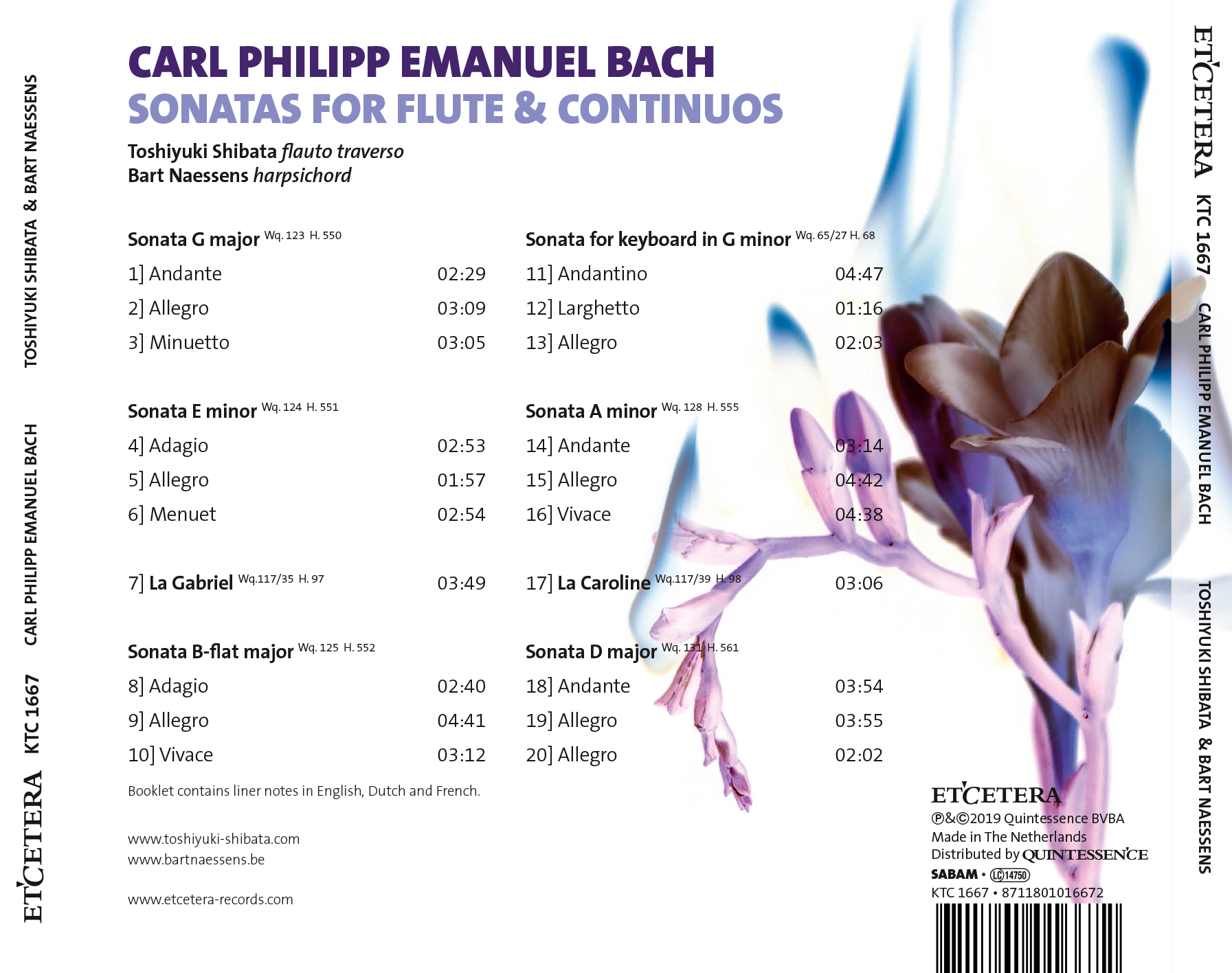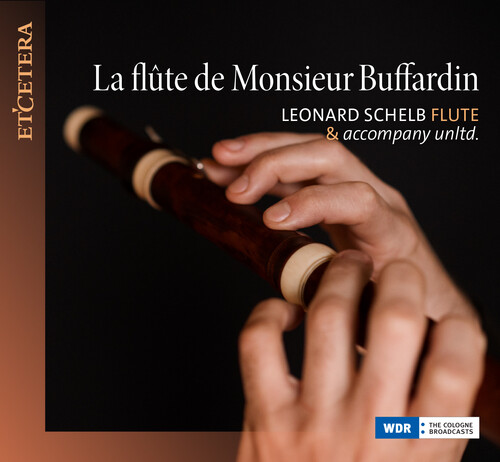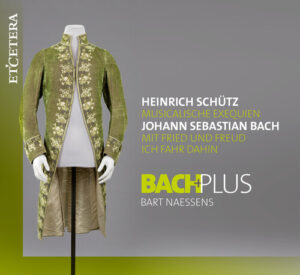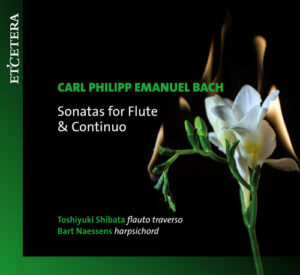1. Sonatas for Flute & Continuos: Sonata in G Major, H.550: I. Andante
Composer: Carl Philipp Emanuel Bach
Artist(s): Toshiyuki Shibata, Bart Naessens
2. Sonatas for Flute & Continuos: Sonata in G Major, H.550: II. Allegro
Composer: Carl Philipp Emanuel Bach
Artist(s): Toshiyuki Shibata, Bart Naessens
3. Sonatas for Flute & Continuos: Sonata in G Major, H.550: III. Minuetto
Composer: Carl Philipp Emanuel Bach
Artist(s): Toshiyuki Shibata, Bart Naessens
4. Sonatas for Flute & Continuos: Sonata in E Minor, H. 551: I. Adagio
Composer: Carl Philipp Emanuel Bach
Artist(s): Toshiyuki Shibata, Bart Naessens
5. Sonatas for Flute & Continuos: Sonata in E Minor, H.551: II. Allegro
Composer: Carl Philipp Emanuel Bach
Artist(s): Toshiyuki Shibata, Bart Naessens
6. Sonatas for Flute & Continuos: Sonata in E Minor, H.551: III. Menuet
Composer: Carl Philipp Emanuel Bach
Artist(s): Toshiyuki Shibata, Bart Naessens
7. Sonatas for Flute & Continuos, H.97: La Gabriel
Composer: Carl Philipp Emanuel Bach
Artist(s): Toshiyuki Shibata, Bart Naessens
8. Sonatas for Flute & Continuos, Sonata in B-Flat Major, H.552: I. Adagio
Composer: Carl Philipp Emanuel Bach
Artist(s): Toshiyuki Shibata, Bart Naessens
9. Sonatas for Flute & Continuos, Sonata in B-Flat Major, H.552: II. Allegro
Composer: Carl Philipp Emanuel Bach
Artist(s): Toshiyuki Shibata, Bart Naessens
10. Sonatas for Flute & Continuos, Sonata in B-Flat Major, H.552: III. Vivace
Composer: Carl Philipp Emanuel Bach
Artist(s): Toshiyuki Shibata, Bart Naessens
11. Sonata for Keyboard in G Major, H.68: I. Andantino
Composer: Carl Philipp Emanuel Bach
Artist(s): Toshiyuki Shibata, Bart Naessens
12. Sonata for Keyboard in G Major, H.68: II. Larghetto
Composer: Carl Philipp Emanuel Bach
Artist(s): Toshiyuki Shibata, Bart Naessens
13. Sonata for Keyboard in G Major, H.68: III. Allegro
Composer: Carl Philipp Emanuel Bach
Artist(s): Toshiyuki Shibata, Bart Naessens
14. Sonatas for Flute & Continuos: Sonata in A Minor, H.555: I. Andante
Composer: Carl Philipp Emanuel Bach
Artist(s): Toshiyuki Shibata, Bart Naessens
15. Sonatas for Flute & Continuos: Sonata in A Minor, H.555: II. Allegro
Composer: Carl Philipp Emanuel Bach
Artist(s): Toshiyuki Shibata, Bart Naessens
16. Sonatas for Flute & Continuos: Sonata in A Minor, H.555: III. Vivace
Composer: Carl Philipp Emanuel Bach
Artist(s): Toshiyuki Shibata, Bart Naessens
17. Sonatas for Flute & Continuos, H.98: La Caroline
Composer: Carl Philipp Emanuel Bach
Artist(s): Toshiyuki Shibata, Bart Naessens
18. Sonatas for Flute & Continuos: Sonata in D Major, H.561: I. Andante
Composer: Carl Philipp Emanuel Bach
Artist(s): Toshiyuki Shibata, Bart Naessens
19. Sonatas for Flute & Continuos: Sonata in D Major, H.561: II. Allegro
Composer: Carl Philipp Emanuel Bach
Artist(s): Toshiyuki Shibata, Bart Naessens
20. Sonatas for Flute & Continuos: Sonata in D Major, H.561: III. Allegro II
Composer: Carl Philipp Emanuel Bach
Artist(s): Toshiyuki Shibata, Bart Naessens









Reviews
There are no reviews yet.